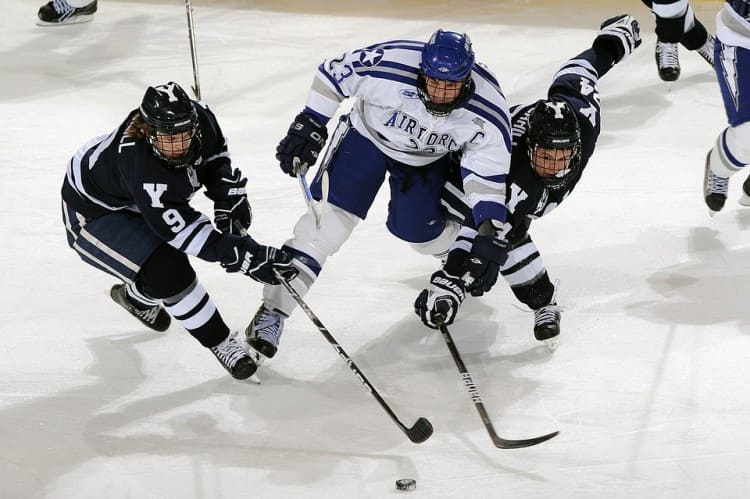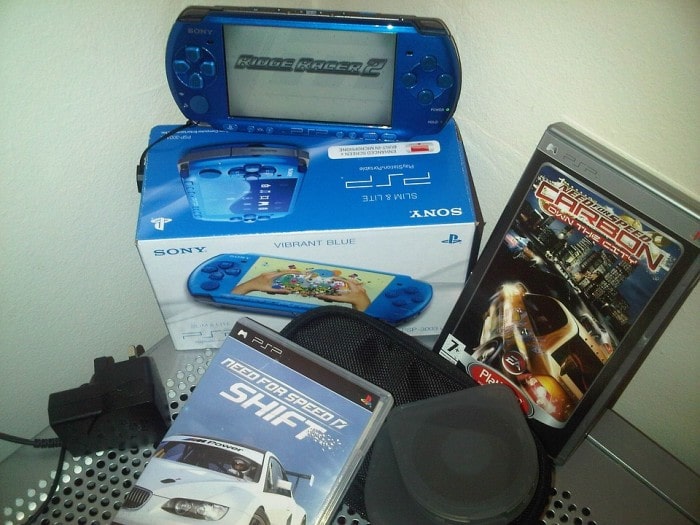You think it would be easy. Head into a sports store (online or brick and mortar), find a pair of skates in your size, pay for them, step onto the rink, and become the next Wayne Gretzky.
Unfortunately, quite a bit of the time it isn’t always this simple – especially becoming the great Gretzky!
Many players experience discomfort after stepping onto the ice and quickly give up on skating which is very unfortunate. Want to avoid this? Then let’s look at some tips for choosing the right pair of skates.
First: Sizing your Skates
In most cases, the ideal hockey skates are about 1.5 sizes smaller than what your shoes run (assuming you are using US sizing). For example, if you wear a size 10.5 sneaker, you are probably going to need a size 9 skate. Unfortunately, this isn’t standard across the industry as some brands size differently however it can be a good starting point.
Secondly, the width of your feet should also be considered. Most companies run narrow, regular, and wide fit skates but of course are not consistent in naming. For instance, some companies may use “C, D, E, and EE” whereas others may use “N, R, or W”.
The easiest thing to do when thinking of buying skates is to visit a few stores, try some on and determine your proper size.
Second: Your position
Something that I did not mention earlier, but probably should have, is that the position you play will also depend on the types of skates you need.
If you plan on playing forward, or defense than regular skates are all you’d need. However, if you are thinking of being a goaltender, you’ll need to look for a different style skate altogether. Goalies skates require a longer thicker blade allowing them to move in short bursts to make saves. Positional players on the other hand have smaller and skinnier blades as they require more speed and better acceleration.
Third: Brand
Just like in other industries, there are some brands that you should look out for more than the others. Brands like Bauer, CCM, and Easton tend to be higher quality and more trusted in the industry. I’ll talk about cost a little later, but the nice thing about these brands is that they tend to have many different models of skates and varying costs. Bauer in particular as inexpensive skates that are great for rec players, but also have skates for elite players like Patrick Kane.
Should you avoid skates that aren’t from these brands? I’d say it depends. If the feature list sounds promising and the price is right, I wouldn’t rule them out. But the main thing with sticking with the main brands is they tend to have more testing behind them and better warranties in case of defects or issues.
Fourth: The Boot
This is similar to the initial sizing section discussed earlier, but a hockey player also needs to find the right boot that works for their foot. You wouldn’t think of it, but hockey boots have probably gone through a ton of different innovations over the past decade.
Companies are always trying to make their boots better in terms of weight, protection, comfort, and overall performance.
One of the more common complaints in wearing skates is pain experienced in the ankle or bottom of the foot. Normally this is an issue with the boot area so when selecting a pair of skates try to find some that provide good heel support and have better ankle padding.
Fifth: Budget
Like anything in life, you get what you pay for. And this is no different with hockey skates. As crazy as it sounds, skates can range from the low end of around $40 all the way to an astounding $500!
One of the first things you need to consider is how much you will be playing and what you can afford. Are $300 hockey skates better than $100 hockey skates? Yes, they are. But does everyone need them? Not even close.
If you are just planning to play hockey with friends in a recreational manner, you really don’t need to break the bank and go for the most bells & whistles. A pair of hockey skates that are comfortable and backed by good brand are properly all you’ll need.
If on the other hand you are competitive player and are looking for more of an edge then absolutely consider the higher end models. It’s close to car shopping and could be compared to looking at a Mercedes vs a Honda (and there is nothing wrong with a Honda!).
Conclusion
As you can see, there is quite a bit involved when looking for the right pair of hockey skates. You have to consider size (and remember these aren’t consistent), the position you play, the brand you are looking at, and finally the cost.
Although the process is tedious, once you find a pair that works, you’ll be flying all over the ice! As a matter of fact, many hockey players find a particular brand and model they like and never switch as they grow some accustomed to them.










